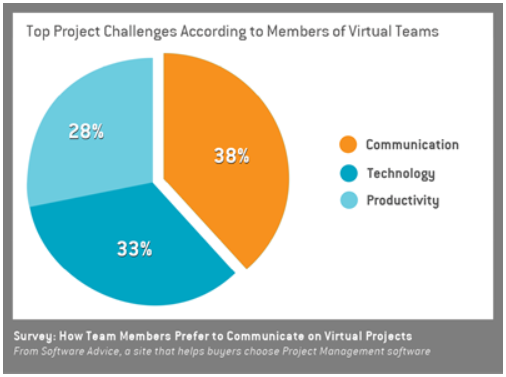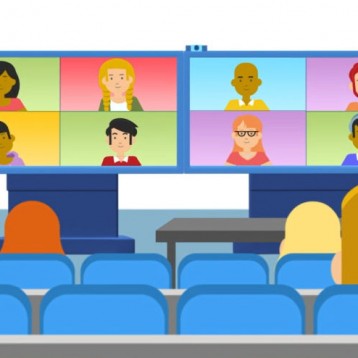You walk into the conference room more prepared than ever to lead a compelling discussion with your most important stakeholders. The video works fine. But moments into your introduction, a remote conference participant interrupts. He didn’t understand what you said. The background noise is pronounced and the voice is so unclear it’s difficult to understand his question.
You need this meeting to work without technical difficulties and to be as effective as if it was in person.
Poor audio in the workplace is a problem we suffer from and compensate for daily. No one is exempt, whether the CEO is briefing a financial analyst or reporting earnings to Wall Street, a salesperson is presenting to a customer, or a marketing team is collaborating with its agency. A poor audio conferencing experience adds to stress and fatigue wastes time and can lead to a negative perception of your company. But it doesn’t have to be this way.
Natural, realistic audio can enable business by contributing to productivity and enhancing the ability to collaborate. This paper describes the costs of poor audio, the benefits of effective communication when conferencing virtually and how CIOs can improve audio to enable productivity and collaboration in their organizations.
Inability to Communication Bites into Productivity
Every day people in all roles—from executives to individual performers—have to collaborate remotely with fellow employees, partners, vendors and customers in order to do their jobs. According to McKinsey, 65 percent of non-IT executives say improving effectiveness of business processes should be a top priority for IT. Meanwhile Software Advice reports 38 percent of workers believe communication is the biggest issue facing global virtual teams. It takes more than a conference phone to have an effective virtual meeting, but a poor conference phone can ruin it. Productivity suffers when employees don’t have the right tools to communicate effectively. Audio is an enterprise IT issue—one CIOs can solve.
 Sound consultant Julian Treasure studies how sound affects us. He reveals how the subtle consequences of coping with noise and distinguishing sounds are more significant than we realize. In a meeting like the one described, we deal with obvious effects like interruptions and the need to repeat ourselves. But we also deal with physiological effects from the cognitive burden of having to work hard to hear and be heard. That burden can make us frustrated and agitated and impact our alertness and productivity.3 It creates stress that disrupts our objectivity leading to errors and regrettable decisions.
Sound consultant Julian Treasure studies how sound affects us. He reveals how the subtle consequences of coping with noise and distinguishing sounds are more significant than we realize. In a meeting like the one described, we deal with obvious effects like interruptions and the need to repeat ourselves. But we also deal with physiological effects from the cognitive burden of having to work hard to hear and be heard. That burden can make us frustrated and agitated and impact our alertness and productivity.3 It creates stress that disrupts our objectivity leading to errors and regrettable decisions.
Most of us settle for okay audio because we’re not aware that realistic, natural audio is readily available. Since its inception, telephone network quality has conditioned us to poor audio and lowered our audio expectations. Cell phones have lowered expectations even more. Over time, we have grown accustomed to poor experiences with conferencing technology and learned to adapt. By contrast, the quality experiences we have with good headsets and free conferencing services often amaze us. It’s time we expect this quality all the time. If done well, it’s what we sound like when we communicate face-to-face.
Realistic, Natural Audio is an Affordable Business Advantage
Realistic, natural audio has been available for many years but predominantly only in highly controlled environments such as dedicated telepresence suites. These technologies were cost prohibitive for mass use since outfitting one meeting space costed tens or hundreds of thousands of dollars. Today, many of these technologies are available at a fraction of the cost as standard features in unified communications infrastructure solutions and in some conference phones.
When conference technology manufacturers design solutions to use the full range of human hearing, they reduce the cognitive fatigue people experience. Using the full spectrum of human hearing helps meeting participants differentiate sounds so they use less brainpower to discern similar words and understand unfamiliar accents. The result is better comprehension, which enables productivity and allows people to feel more relaxed and less stressed. But to truly enable realistic, natural audio, the conference phone must do more.
When we converse face-to-face, we often speak at the same time. Our brains filter out background noises such as air conditioning and rustling paper, and we automatically compensate for people who speak quietly or loudly. To be effective, conference phones have to filter out noise and remove other artifacts caused by the distance between locations and people projecting at different volumes. Furthermore, the conference phone should mitigate those eerie silences that cause us to waste time asking, “are you still there”? The right conference phone can solve all of these problems.
With video conferencing on the rise, the complex science of audio cannot be underestimated. Poor audio quality will turn great video into a bad experience. Even with powerful enterprise networks and software applications, audio problems can persist.
And poor audio often motivates employees to seek out low-cost or free solutions such as Facetime and Skype that can expose companies to security risks.
CIOs can ensure poor audio does not cripple otherwise good technology investments. They can achieve this and fully realize the value of those investments by being as diligent about selecting high-quality audio solutions as they are about selecting the rest of their communications infrastructure. Knowledgeable vendors who understand A/V and acoustics can help CIOs select the right solutions for meeting spaces of any size and surface.
Audio Can Help Make IT a Competitive Differentiator
CIOs around the world are transforming IT departments from tactical functions to organizations that bring a competitive advantage and are an enabler of the business. For these organizations, providing tools that improve productivity is a top priority. CIOs should assess employees’ meeting environments and learn how they work and collaborate as input for technical requirements and budgets before making communications technology decisions. Sound is fundamental. Without sound, content sharing is little more than a billboard, and video conferencing is two-way surveillance. Poor or inadequate audio puts the user somewhere on one of these spectrums of ineffective communication.
When enterprises are equipped with tools that make natural-sounding audio and effective communication in a secure environment a day-to-day expectation, everyone from executives to individual performers will easily collaborate whenever and wherever, experiencing less stress and greater productivity. The result is an environment where the best ideas become real, faster and more efficiently while incurring less travel time, cost, and fewer support calls to IT. Today’s CIOs know conferencing is about more than a microphone and speaker. It’s about hearing and being heard and creating meeting experiences that are as close to face-to-face as possible.
By Yamaha







